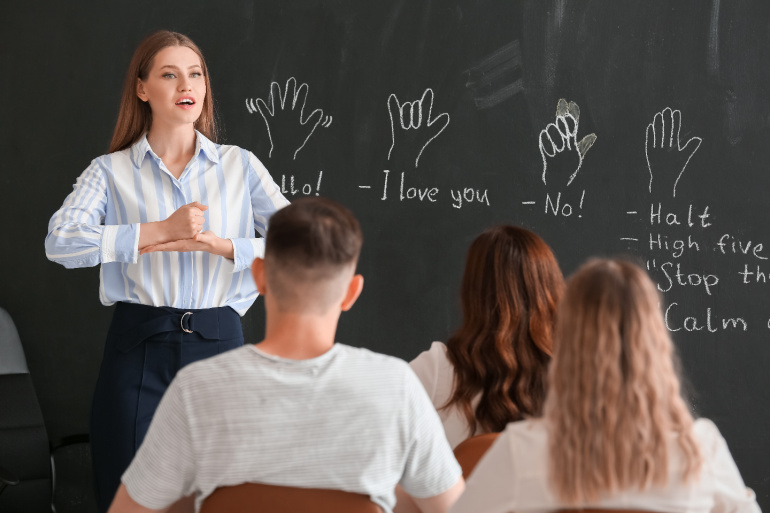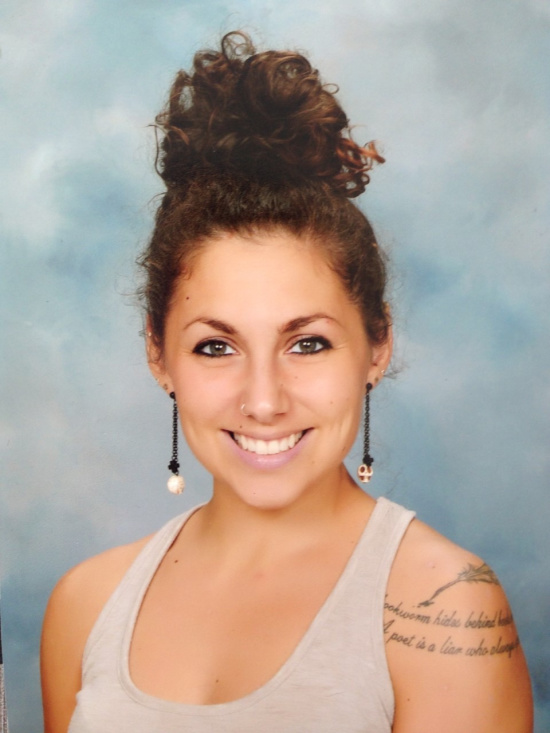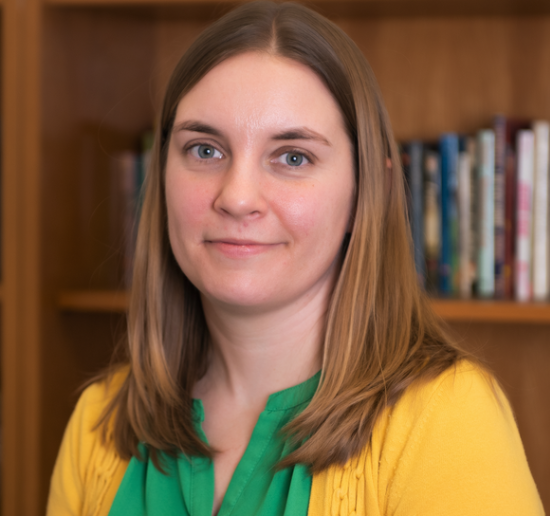
It’s perhaps not surprising that English and Spanish are the two most-used languages in the United States. But the third?
Due to the estimated 11.5 million people in the United States — including 386,000 in Michigan — who are deaf or hard of hearing, that designation goes to American Sign Language (ASL).
The Wayne State University College of Education is in the process of developing a Deaf studies minor to educate more people to better communicate with people who are deaf or hard of hearing. As it grows its programs to include teacher certification, the college also plans to actively recruit students who are deaf or hard of hearing.
“We would like to prepare teachers who are capable of teaching deaf students; after all, we are a college of education,” said Kathryn Roberts, interim assistant dean of teacher education. “There's definitely more need than there is capacity in the state right now to create teachers.”

To help develop the curriculum and build the program, the college has hired Emily Jo Noschese, a tenure-track assistant professor of bilingual and bicultural education. Noschese, who completed her Ph.D. in linguistics at the University of Hawai'i at Māona, is fourth-generation deaf.
“My parents, my grandparents, aunts, uncles, nieces and nephews are all deaf, so it's in my family heritage,” said Noschese. “I would say my situation is kind of rare. Around 96 percent of deaf children are born from hearing parents, and some get sick, which can cause deafness.”
Roberts says Noschese has helped identify and hire five part-time ASL instructors.
“It's really important in our division that we have people who are from the Deaf community and understand Deaf culture teaching for us,” said Roberts. “Dr. Noschese has been instrumental in finding us appropriate people to teach our courses.”
With the new instructors on board, the College of Education offered eight sections in ASL I and II this semester, and all of them filled up quickly. Most of the students are non-education majors taking the classes to fulfill two semester language requirements. The College of Education does not have a language requirement unless students are becoming a language teacher.
“They’re for everybody on campus,” said Noschese. “At some point, everybody will meet deaf people in their workforce. If students become doctors, they are going to have deaf patients. If they become lawyers, they are going to have deaf clients. Essentially, the ASL classes or minor will help students know what to expect when they meet deaf individuals and help them interact with the Deaf community better.”
Underscoring the interest, ASL III – taught by Noschese – is also being offered for the first time this semester. Although it doesn’t fulfill a language requirement, it is also attracting students.
The proposed minor will also include ASL IV and classes on fingerspelling, numbers, grammar and Deaf culture.

Noschese believes the minor can help dispel misconceptions, such as deaf people don’t make noise, that all can read lips, and that sign language interferes with the development of speech.
“Being deaf is not visible,” said Noschese. “A lot of people have probably met or stood next to someone who is deaf and not realized it. Many deaf individuals have frustrations or encounter barriers because of hearing people’s ignorance. It’s not their fault; we just have to continue to educate individuals.”
Roberts said building the Deaf studies minor has already prompted the college to reevaluate issues of access.
“For example, usually we cap our classes at 25 or 30 students,” said Roberts. “But when we do sign language courses, we kept them at 20 because you have to be able to see people’s hands and facial expressions. You can't do that in the Zoom boxes when it’s more than one screen. You have to be able to see everybody on one screen and really be able to see them. It’s not just a class and a topic that you use sign language as the language of instruction; it requires a whole different perspective.”
The ASL classes and proposed minor will all be offered synchronously online in order to be accessible to people where they may be.
